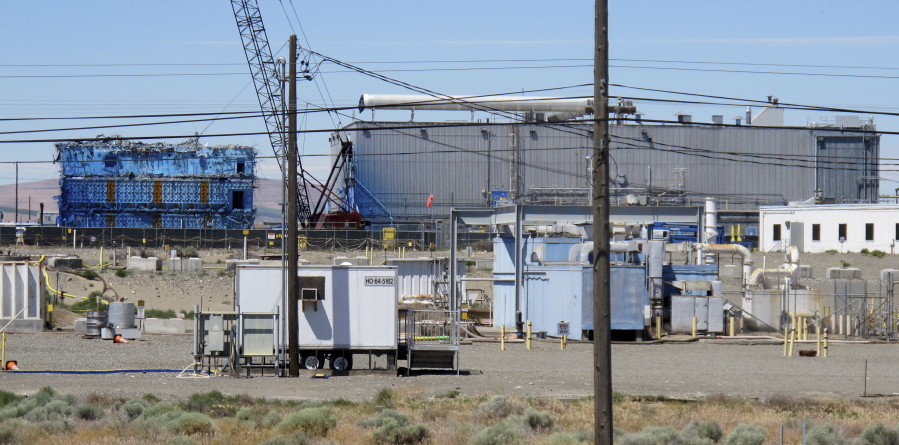Another spread of radioactive contamination has been confirmed at the Hanford nuclear reservation’s Plutonium Finishing Plant.
In addition, more central Hanford workers have tested positive for inhaling or ingesting radioactive contamination from demolition of the plant.
For the second time since workers were moved in January to offices away from the plant, contamination has been found on the steps of the newly assigned offices.
Most recently, a spot of radioactive contamination described as about the size of a 50-cent piece was found on the step outside an office on Feb. 8. The step has been removed.
In some cases radiation detected at Hanford is determined to have come from naturally occurring radon, but in this case it appears to be related to demolition of the heavily contaminated plant.
Demolition and the packing and hauling away of the debris has been stopped at the plant since mid-December after a spread of particles of radioactive contamination was discovered.
Most of the demolition of the Plutonium Reclamation Facility, the most contaminated portion of the plant, had just been completed when the spread was found.
Several steps have been taken since December, including bringing in new contractor management for the project, widely expanding the area where access is controlled and moving workers from offices near the plant to offices outside the control area.
Workers take shuttles to and from the plant, as needed for work assignments, from their newly assigned offices.
In response to the first discovery of a spot of contamination outside the new offices in late January, more stringent rules were instituted for checks of workers leaving radiologically contaminated demolition areas.
In response to the Feb. 8 spread, the radiological buffer around areas where radioactive material is expected to be present has been expanded. Workers have their hands and feet checked for radiation when they leave that area to board a shuttle to offices.
The number of workers known to have inhaled or ingested radioactive particles has increased to six.
Some 212 workers who requested checks had no contamination, with about 60 checks pending. Bioassays, or checks of body waste, are being done to determine if workers have radioactive contamination inside their bodies.
The amount of internal contamination is small. The largest estimated radiation dose for the six workers is 10 to 20 millirem over 50 years.
In comparison, the average person in the United States receives about 300 millirem a year annually from natural background radiation, including radon or radiation bombarding the Earth from outer space.
The six workers with positive bioassay results are in addition to 31 workers who tested positive for inhaling or ingesting radioactive contamination from Plutonium Finishing Plant demolition in June. The highest estimated dose from June was 10 millirem total over 50 years.
No radioactive contamination has been found on vehicles at the plant for several weeks.
The total of contractor and government vehicles with spots of contamination related to the December demolition has totaled 29, and seven worker cars or pickups has spots of contamination on their exteriors.
One of the cars was a rental that was released after decontamination. When additional concerns were raised, it was tracked down to Spokane and a second survey found no contamination.
Private vehicles have been decontaminated, but a tent is being constructed to decontaminate most of the government vehicles.
Demolition of parts of the Plutonium Finishing Plant that remain standing will not resume until both the Department of Energy and its regulator, the Washington State Department of Ecology, are confident it can be done safely.
An in-depth look at the cause of the contamination spread will be completed and used to develop a new approach to demolition of the part of the plant that remains standing.
During the Cold War, about two-thirds of the nation’s plutonium for its nuclear weapons program came off of the plant’s production lines.
Plutonium in a liquid solution was turned into buttons the size of hockey pucks and oxide powder for shipment to a nuclear weapons manufacturing plant.



